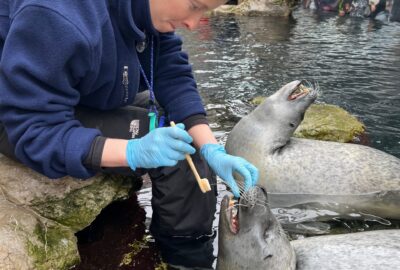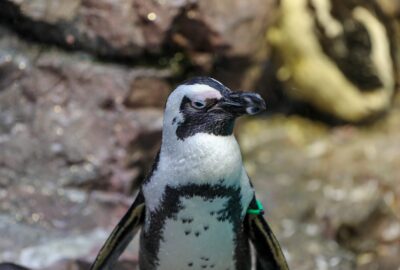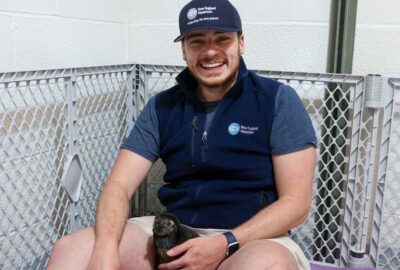Please note: We strongly recommend purchasing tickets online in advance to guarantee entry, as we do sell out on weekends.
Meet Some of the Aquarium's Long-Lived Animals
There are dozens of animals who, thanks to the expertise and dedication of our Animal Care team, have been with us for many years.
By New England Aquarium on Thursday, August 24, 2023

Myrtle might be the Aquarium’s most famous long-time resident, but there are dozens of other animals who have spent many years under the care of our Animal Care experts. Here, get to meet some of these special animals.
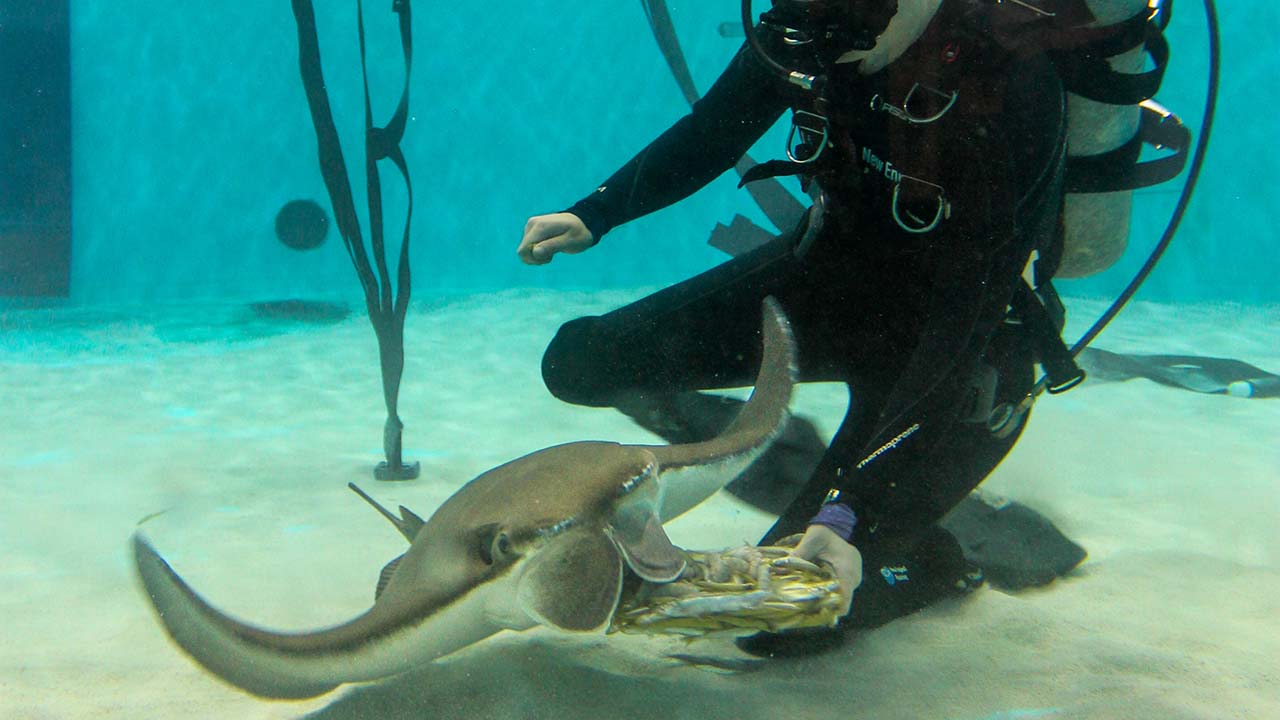
Mystic, the cownose ray
Mystic, who celebrated her 24th birthday this August, has her permanent home in our Quincy Animal Care Center. She’s been in the care of the Aquarium for over 14 years after arriving from the Mystic Aquarium in 2008. In the wild, cownose rays live for around 18–20 years, so Mystic has exceeded her expected lifespan and is continuing to thrive.
While Mystic spent a number of years in the Giant Ocean Tank, because of her advanced age and size—Mystic weighs almost 62 pounds, and her wingspan is a little over 3.5 feet!—our aquarists determined it’s best for her well-being that she spends the remainder of her life in Quincy. There, she and her cownose ray tankmates get enrichment two times a week, interacting with Hol-ee balls or Kongs filled with food items. Mystic eats a combination of squid, shrimp, capelin, silversides, and clam and receives multivitamins by hand each day.
For her recent birthday, Aquarist II Kristen Ulrich celebrated Mystic with a special “cake” filled with her favorite foods and hand-delivered it by diving in the tank!

Ike, the common tern
Ike’s journey to the Aquarium began when she was brought to the Cape Wildlife Center as a chick. Someone had seen Ike and assumed she needed help—but being removed from her parents, she missed out on important early socialization, which would have taught her skills like interacting with other terns, diving, and more. Because of this, Ike was deemed non-releasable.
“Ike’s story is an important reminder to always contact an authorized wildlife rescue or rehabilitation organization if you encounter an animal that appears in distress,” said Aquarist II Alex Harvey. “These professionals can assess the situation and respond accordingly.”
Today, Ike is 17 years old. She arrived at the Aquarium in October 2006, and her estimated hatch date is May 2006. In the wild, common terns are known to live into their teens, and it’s possible that Ike will live well into her 20s here at the Aquarium. She resides with other shorebirds, including Mo and Peepsqueek, in the Shorebirds exhibit and mainly eats silversides—though she also enjoys waxworms as a treat. Ike does not have a band on her leg, which is how you can tell her apart from the other two terns in the exhibit.
Fun fact: Ike and fellow common tern Truro respond to their names when called! This behavior helps aquarists deliver silversides filled with vitamins to ensure they’re getting all the nutrients they need.
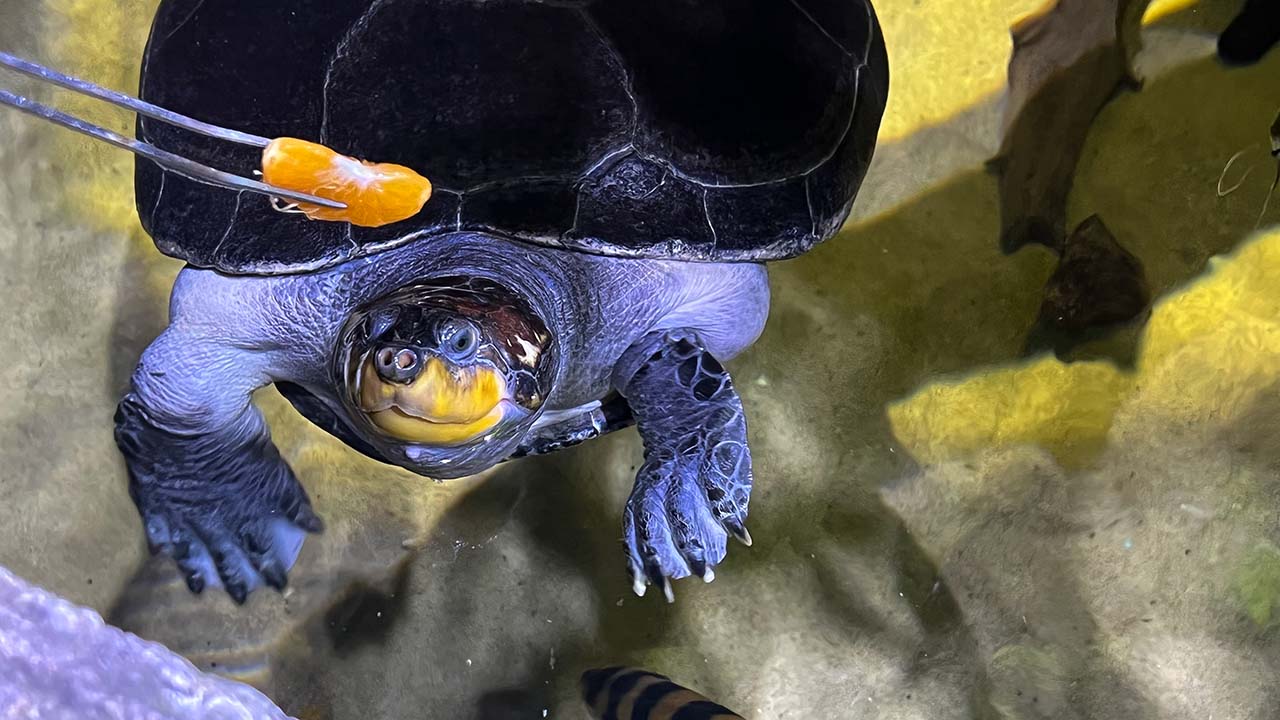
Peru, the yellow-spotted Amazon river turtle
While Myrtle is the queen of the Giant Ocean Tank, Peru is the undisputed queen of the Flooded Forest, one of the exhibits that highlight the ecology of the Amazon River. Her hatch year is 1985, making her around 38 years old, and she arrived at the Aquarium from the Indianapolis Zoo as part of a species survival plan in 1990.
Peru has a son who lives with her in the exhibit. Female yellow-spotted Amazon river turtles are typically larger than the males; at 26.3 pounds, Peru is considerably larger than her son, whose nickname is “Oed.”
While Peru is long-lived, she’s about middle-aged for her species—which is thought to be able to live up to 70 years. Native to the Amazon and Orinoco River basins, yellow-spotted Amazon river turtles are listed as a vulnerable species by IUCN.
“When I first started working with Peru, it took her a little while to come out of her shell—pun fully intended,” said Senior Aquarist Allison Waltz-Hill. “I spent a lot of time holding some of her favorite snacks, like lettuce, bok choy, dandelion greens, peas, and fruits, and letting her come over to me to eat. Now, she’s so used to me I can put my empty hand out, and she’ll come right over.”
Allison added, “Once you get to know her, you find she’s really a very outgoing, confident turtle.”
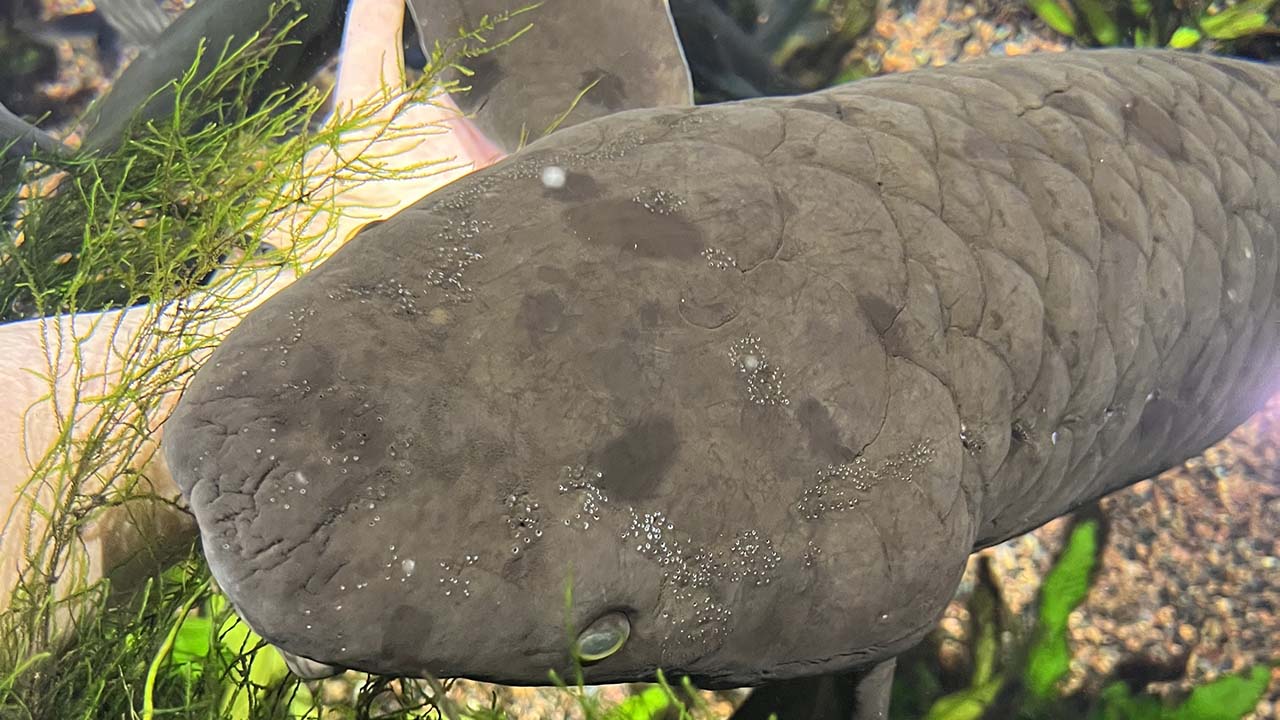
Australian lungfish
One of the Australian lungfish in our Ancient Fishes exhibit is at least 29 years old, having arrived at the Aquarium in 2012 from the Cleveland Zoo, where it had been since 1994. In the wild, Australian lungfish are only found in three river systems across northeast Australia and are one of only six extant species of lungfish in the world. As its name suggests, the Australian lungfish has a single dorsal lung which it can use to breathe in addition to its gills. This comes in especially handy during droughts or in deoxygenated water, when it may be more difficult for the lungfish to use its gills efficiently.
Lungfishes first appeared in the fossil record over 300 million years ago, and they’re thought to have the longest genome of any animal in the world. The lungfish at the Aquarium enjoys an omnivorous diet, including one of its favorite treats—bananas! Our aquarists hope to eventually age the lungfish to determine exactly how old it is. As a species, they’re known to be long-lived, reaching 100 years of age or more.

